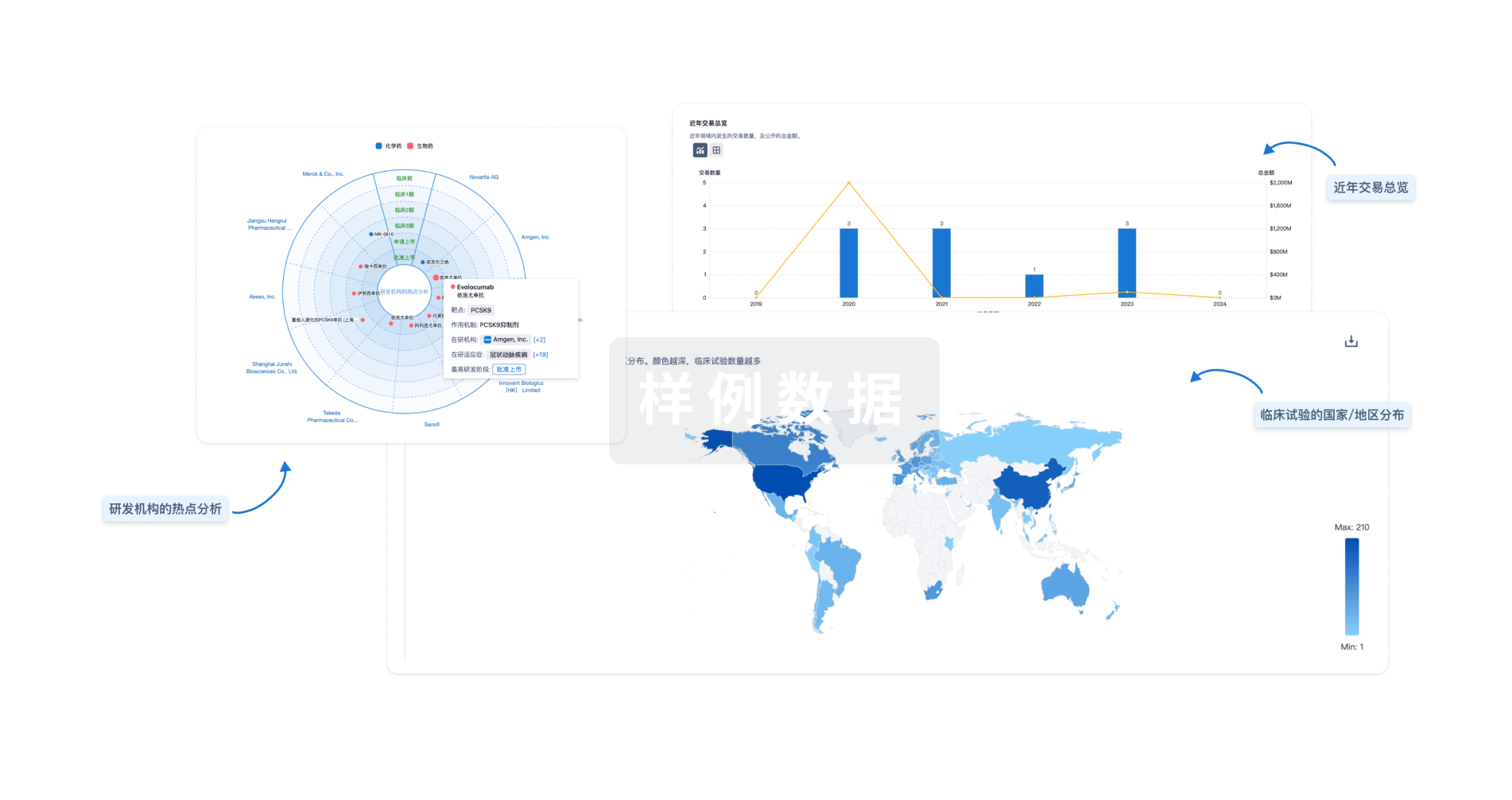预约演示
更新于:2025-05-07
NPY6R
更新于:2025-05-07
基本信息
别名 neuropeptide Y receptor Y6 (pseudogene)、NPY Y1-like receptor、NPY1RL + [7] |
简介 When expressed, is unable to bind pancreatic polypeptide (PP), neuropeptide Y (NPY), or peptide YY (PYY), suggesting that either it is functionally inactive or that it may have acquired a pancreatic polypeptide-independent function. |
关联
100 项与 NPY6R 相关的临床结果
登录后查看更多信息
100 项与 NPY6R 相关的转化医学
登录后查看更多信息
0 项与 NPY6R 相关的专利(医药)
登录后查看更多信息
512
项与 NPY6R 相关的文献(医药)2025-02-01·BMJ Neurology Open
Perfusion patterns as a tool for emergency stroke diagnosis: differentiating proximal and distal MCA occlusions
Article
作者: Meier, Norbert ; Buerke, Boris ; Görlich, Dennis ; Heindel, Walter ; Sauerland, Cristina ; Ortega-Quintanilla, Joaquin ; Jingyu, Liu ; Velasco Gonzalez, Aglae
2025-02-01·Foot & Ankle Specialist
Incidental Finding of Plantar Plate Pathology on Routine Magnetic Resonance Imaging of the Foot and Ankle
Article
作者: Kachooei, Amir R. ; Shakked, Rachel J. ; Roedl, Johannes ; Pedowitz, David I.
2025-01-01·Journal of Dairy Science
Chromium and palmitic acid supplementation modulate adipose tissue insulin sensitivity in postpartum dairy cows
Article
作者: Contreras, G Andres ; Abou-Rjeileh, Ursula ; Bhattacharya, Sudin ; Parales-Giron, Jair ; Panda, Vishal ; Gandy, Jeff ; Lock, Adam L. ; Chirivi, Miguel ; Terrian, Leah ; Contreras, G. Andres ; Lock, Adam L
6
项与 NPY6R 相关的新闻(医药)2025-01-02
·药时空
概要
肝细胞癌(HCC)起源于分化的肝细胞在被病毒或代谢功能障碍相关的脂肪性肝炎(MASH)损伤的肝脏中进行代偿性增殖。在增加HCC风险的同时,MASH触发p53依赖性肝细胞衰老,这与营养过剩诱导的DNA断裂相似。这种肿瘤抑制反应是如何被绕过以允许致癌突变并使HCC进化的,这在以前是不清楚的。
2025年1月1日,四川大学Gu Li、Zhu Yahui及加州大学圣地亚哥分校Michael Karin共同通讯在Nature 在线发表题为“FBP1 controls liver cancer evolution from senescent MASH hepatocytes”的研究论文,该研究发现糖异生酶果糖-1,6-二磷酸酶1 (FBP1)是p53的靶标,在衰老样MASH肝细胞中升高,但在大多数人类HCC中通过启动子超甲基化和蛋白酶体降解抑制。
FBP1首先在代谢应激的癌前疾病相关肝细胞和HCC祖细胞中下降,与AKT和NRF2的致瘤活性相似。通过加速FBP1和p53的降解,AKT和NRF2增强了先前衰老的HCC祖细胞的增殖和代谢活性。逆转衰老和支持增殖的NRF2-FBP1-AKT-p53代谢开关在小鼠和人类中起作用,也促进了DNA损伤诱导的体细胞突变的积累,这是MASH向HCC进展所必需的。
基因毒性应激和RAS癌蛋白触发肿瘤抑制性复制性衰老,强制细胞周期退出,以减少进一步的DNA损伤、端粒侵蚀和肿瘤发生。然而,衰老也通过衰老相关分泌表型(SASP)加速衰老相关病理和促进肿瘤发生。衰老细胞高度表达细胞周期抑制剂,如p16INK4a和p21CIP1,去除它们可以延缓衰老相关的变性。虽然分化的肝细胞很少分裂,但它们通过与胰岛素抵抗和代谢功能障碍相关的脂肪变性肝病(MASLD)相关的营养不良相关的代谢应激触发的不明确机制进入衰老样状态。晚期MASLD/MASH的定义是肝损伤、炎症、纤维化和HCC风险升高。
在促进MASH的同时,衰老可以抑制肿瘤的发生。尽管衰老样癌前肝细胞可能受到免疫监视,但MASH与免疫抑制和类似小鼠HCC祖细胞(HcPCs)的疾病相关肝细胞(daHeps)的积累有关。这些相反的结果提出了一个重要的问题,即MASH如何在引发复制性衰老的同时增加HCC风险。为了解决这个问题,研究人员确定了一个独特的、以FBP1为中心的信号传导和代谢开关,该开关可以逆转衰老并使MASH-HCC进展。
FBP1或p53缺失和AKT激活导致NRASG12V肿瘤发生(图源自Nature )
FBP1控制糖异生,抑制HCC。胚系FBP1缺乏合并葡萄糖剥夺可引发低血糖、乳酸性酸中毒、肝肿大、肝纤维化、肝损伤和高脂血症。尽管有饮食管理,FBP1缺乏的年轻人仍表现出MASLD的迹象。这是否会导致HCC尚不清楚。在FBP1缺陷小鼠中,研究人员发现饥饿诱导的低血糖是由糖异生损伤和糖原缺乏引起的,而MASLD体征是由AKT过度激活引起的。与酶活性无关,FBP1稳定地与AKT和醛缩酶B (ALDOB)结合,并招募蛋白磷酸酶2A催化亚基(PP2AC)来抑制AKT的活化。
文章模式图(图源自Nature )
FBP1介导的肿瘤抑制可以通过糖酵解减少、HIF-1抑制和肝星状细胞SASP抑制来解释。基于在肝细胞特异性激活NRF2(一种抑制衰老和促进肝癌发生的代谢控制转录因子)的小鼠中发现的AKT依赖性肝大,该研究检测了FBP1- NRF2的相互作用及其在人类HCC中FBP1下调中的作用。该研究发现了一个开关样的自动调节网络,其中饮食引起的DNA损伤细胞自主诱导p53和FBP1来加强肝细胞衰老,并且在代谢应激的HCC祖细胞中NRF2和AKT激活后,该网络被逆转。
参考消息:https://www.nature.com/articles/s41586-024-08317-9
识别微信二维码,可添加药时空小编
请注明:姓名+研究方向!
临床研究
2024-12-24
·生物谷
近日,中国科学院上海免疫与感染研究所肖晖研究组与山东大学基础医学院高成江团队合作在Plos Pathogens杂志上发表了题为" The protein segregase VCP/p97 promotes host antifungal defense via regulation of SYK activation" 的研究论文,揭示了VCP参与抗真菌信号通路Dectin-1调控的新功能和新机制。
真菌感染已造成重大公共健康威胁,尤其是艾滋病患者、骨髓移植患者、化疗病人和先天免疫缺陷患者等免疫功能低下者易患真菌感染。尽管已有抗真菌药物, 但是大部分真菌均能产生耐药性,使得真菌血症的致死率超过40%。
因此,更好地了解宿主免疫系统尤其是固有免疫系统如何对抗真菌感染对于开发新型的抗真菌感染药物至关重要。尽管以往的研究对Dectin-1信号转导通路进行了初步探讨,但其具体分子机制尚未充分揭示,尤其是在该通路中与酪氨酸磷酸化相关的关键分子的调控机制,尚未被全面识别与解析。
本研究采用系统的实验方法,鉴定并验证了应激反应蛋白VCP/p97在Dectin-1信号通路中的关键作用。首先利用ZymD刺激树突状细胞,在不同时间点取样后质谱分析酪氨酸磷酸化的蛋白,筛选出VCP这一新的磷酸化蛋白。进一步研究表明,激活Dectin-1通路能诱导VCP发生酪氨酸磷酸化修饰,且这一磷酸化过程可被酪氨酸激酶抑制剂PP2有效抑制。通过敲低VCP表达或抑制其解聚酶活性,均导致Dectin-1不能有效诱导SYK的磷酸化,并显著降低骨髓来源的巨噬细胞(BMDMs)及树突状细胞(BMDCs)中促炎细胞因子TNF-、IL-6及趋化因子CXCL1的表达水平。
进一步遗传学研究显示,巨噬细胞和中性粒细胞特异性敲除VCP的小鼠在白色念珠菌感染模型中表现出更高的易感性,这一结果也在使用VCP抑制剂的白色念珠菌感染小鼠模型中得到了验证。在机制方面,生化研究表明VCP与其辅助蛋白UFD1在Dectin-1受体激活后与SYK及其负调控因子SHP-1结合,形成复合体。本研究还发现SHP-1在Dectin-1激活后发生泛素化修饰,VCP或UFD1通过促进SHP-1的降解,从而有效地激活SYK和Dectin-1信号的转导。
图例:模式图
综上,本研究的结果首次证实了VCP能够显著促进Dectin-1信号通路的活化,并将VCP与Dectin-1通路及SYK的激活直接联系起来,进一步阐明了VCP在宿主抗真菌免疫防御中的关键作用。上述结果为理解Dectin-1信号通路活化的调控机制提供了新的视角,还为抗真菌免疫干预的潜在靶点提供了重要依据。
论文链接:
https://journals.plos.org/plospathogens/article?id=10.1371/journal.ppat.1012674
原文链接:
http://www.ips.ac.cn/tpxw/202412/t20241218_7503067.html
本文仅用于学术分享,转载请注明出处。若有侵权,请联系微信:bioonSir 删除或修改!
临床研究
2023-07-07
·生物谷
2023年6月26日,中国科学院生物物理研究所王艳丽研究团队与英国塞恩斯伯里实验室(The Sainsbury Laboratory)马文勃研究团队合作在《Cell》杂志发表了题为" Pathogen protein modularity enables elaborate mimicry of a host phosphatase"的文章,首次发现在疫霉属病原微生物中,普遍存在一类WY1-(LWY)n效应子蛋白, 通过保守的PP2A interacting module 挟持宿主细胞中的PP2A核心酶。在病原微生物感染植物过程中,为了有效侵染宿主,病原微生物会向宿主细胞中分泌一大类蛋白分子,即效应子(effectors)。效应子通过操纵宿主细胞的免疫相关分子,进而干扰植物细胞的免疫防御过程,从而使得病原菌更容易侵染植物。为了进一步探究效应子与特定宿主分子的相互作用,在本研究中,我们以来自大豆疫霉(Phytophthora sojae)的效应子PSR2为研究对象,通过免疫共沉淀检测,发现其可以挟持宿主细胞中的PP2A核心酶,并形成一种非传统型的全酶形式。该全酶干扰了宿主细胞的某些代谢通路,使得病原微生物更易侵染植物。此外,我们还利用晶体学手段,解析了2.3埃PSR2-PDF1二元复合物晶体结构(图1),发现PSR2的LWY2-LWY3 (命名为PP2A interacting module) 形成的凹槽形结构,与内源B亚基竞争结合相同的位点,结合位点都位于A亚基的N端。在竞争结合过程中,PSR2可以有效的竞争掉内源全酶中的B亚基。此外,通过序列比对以及结构叠合分析,我们发现PP2A interacting module这个区域的氨基酸在已鉴定的WY1-(LWY)n效应子蛋白中,具有较高的结构,序列保守性。我们将筛选出保守性较高的15个效应子蛋白,通过体内生化实验一一鉴定。发现了其中12个也具备挟持宿主细胞中的PP2A核心酶的功能。为了进一步验证该结论,我们选出了其中一种蛋白PITG_15142,并拿到了该蛋白的晶体结构。通过结构分析以及体外生化实验证实了PP2A interacting module 的保守性。总之,本论文揭示了在疫霉属中,普遍存在一类WY1-(LWY)n效应子蛋白, 通过保守的PP2A interacting module挟持宿主细胞中的PP2A核心酶,并形成一种非传统型的全酶形式,干扰宿主细胞的某些免疫防御过程,使得病原微生物更易侵染植物(图2)。疫霉的感染是全球植物健康和粮食安全的主要威胁。本论文发现可以为植物病原菌防御提供重要理论支持。图1:PDF1(1-390)-PSR2(59-670)二元晶体复合物结构图2:效应蛋白挟持宿主PP2A核心酶示意图英国塞恩斯伯里实验室博士后李辉以及中国科学院生物物理研究所博士生王金龙为本文的共同第一作者。英国塞恩斯伯里实验室马文勃以及生物物理研究所王艳丽为共同通讯作者。本研究得到国家自然科学基金委项目、中国科学院战略性先导科技专项(B类)、中国科学院前沿科学重点研究项目的经费支持。文章链接:https://www.sciencedirect.com/science/article/pii/S0092867423006402会议推荐会议详情会议名称:2023(第14届)细胞与基因治疗国际研讨会暨抗体工程与创新免疫治疗技术论坛暨2023细胞免疫治疗专业委员会年会主办单位:生物谷、梅斯医学、同济大学附属同济医院、南京可缘大会时间:9月22-23日大会地点:上海 大会规模:1500人2010年至今,生物谷联合各合作单位已经顺利召开了13届细胞与基因治疗国际研讨会,与全球致力于细胞治疗行业同仁们一同成长沉淀,在提供行业信息交流平台的同时,也为基础研究提供了技术/产品等产业化的孵化平台。基于此,本届会议将继续以转化医学为切入点,以基础研究与临床应用相结合,针对细胞治疗的临床前沿研究、临床监管、治疗规范、细胞治疗安全性,免疫细胞新型疗法、实体瘤治疗、干细胞与癌症、抗体药物、核酸药物、基因编辑、肿瘤免疫治疗等热门议题进行讨论,诚邀国内外产学研医专家共聚,共绘产业发展新蓝图!长按识别二维码立即报名参会
分析
对领域进行一次全面的分析。
登录
或

生物医药百科问答
全新生物医药AI Agent 覆盖科研全链路,让突破性发现快人一步
立即开始免费试用!
智慧芽新药情报库是智慧芽专为生命科学人士构建的基于AI的创新药情报平台,助您全方位提升您的研发与决策效率。
立即开始数据试用!
智慧芽新药库数据也通过智慧芽数据服务平台,以API或者数据包形式对外开放,助您更加充分利用智慧芽新药情报信息。
生物序列数据库
生物药研发创新
免费使用
化学结构数据库
小分子化药研发创新
免费使用